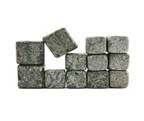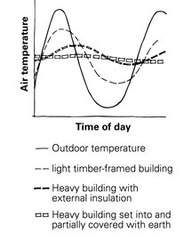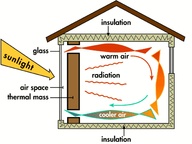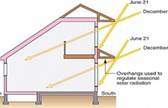Knowing the Difference Between Thermal Mass and Insulation
by Mark Row
 Thermal Mass and Insulation – Friends or Foes?
Thermal Mass and Insulation – Friends or Foes?
Knowing the difference between thermal mass and insulation can not only contribute to your home insulation, but also help you determine when these two should be combined and when opting for only one of them is a more substantial and effective solution. All this can consequently help you save money on the long term, increasing the overall energy efficiency. Thermal mass and insulation are often mistaken for one another or used as synonyms which is however not true. Although both are used for slowing down the heat movement, there are a lot of differences that need to be taken into account, since you do not want to make a common mistake and relay on the thermal mass in spaces that need to be insulated and the other way around. Insulation shop is here to provide some answers on basic differences between thermal mass and home insulation all in order of helping you make the right decision and properly protect your home.
Thermal Mass Basics
 Let’s start with some thermal mass basics before moving on to explaining the relation between thermal mass and insulation. Thermal mass is, in short, specific material ability to absorb, bur also store and radiate heat. Instead of dealing with thermal heat formulas and equations, which I suppose do not mean much to common people, I believe is best to try explaining it using a simple example. Namely, if you are dealing with an old house, with no additional insulation, the walls simply absorb the heat during the day until fully charged (just like a battery) when they continue to emit and channel the heat to the interior, keeping it warm during the night. However, when the stored heat is completely exhausted, the walls start collecting the cold during the night and radiate it into the interior during the day. The cycle is then repeated.
Let’s start with some thermal mass basics before moving on to explaining the relation between thermal mass and insulation. Thermal mass is, in short, specific material ability to absorb, bur also store and radiate heat. Instead of dealing with thermal heat formulas and equations, which I suppose do not mean much to common people, I believe is best to try explaining it using a simple example. Namely, if you are dealing with an old house, with no additional insulation, the walls simply absorb the heat during the day until fully charged (just like a battery) when they continue to emit and channel the heat to the interior, keeping it warm during the night. However, when the stored heat is completely exhausted, the walls start collecting the cold during the night and radiate it into the interior during the day. The cycle is then repeated.
Thermal mass is proportional to so called thermal admittance which explains the capacity to absorb and release heat. The conclusion is simple – higher thermal admittance results in higher thermal mass. Thermal mass is also determined by the materials density (higher density means higher thermal mass) and thermal conductivity measuring how easy does the heat travel through the material (here, moderate thermal conductivity implies higher thermal mass). This leads us to a conclusion that certain materials like water, concrete, stone, brick and gypsum plaster are materials with high thermal mass, while materials like timber, steel or mineral fiber insulation have low thermal mass.
Thermal Mass and Insulation Relation
Now that you are aware (and hopefully understand) the basic principles of thermal mass, let’s move on to thermal mass and insulation relation, that is whether these two exclude each other or should they be combined in a way. Unlike thermal mass, insulation refers to the insulation materials ability to slow down and control the heat transfer, maintaining the temperature difference between the inside and the outside, determined by the material R- and U-values. Proper insulation can protect your home from drastic weather and temperature changes, so always choose your insulation material wisely, since not all products are applicable to every part of your home, but be aware of the differences when insulation your floor, roof or cavity wall. Insulation shop is here to offer you all the help you need, starting from some useful advices to the whole set of high quality insulation products.
 Firstly, let’s answer the question on choosing between thermal mass and insulation. This could depend on the outer temperature fluctuations, that is in which range does the temperature outside change (this could depend on the climate). Let’s say that you want to maintain a stabile, constant inner temperature, while knowing that the outside temperature is also (more or less) stabile and constant, however higher than the temperature you want to maintain inside. Here, when opting between thermal mass and insulation, you should probably go for insulation, since it will stop the additional heat from penetrating in, keeping that difference between outside and inside temperature. In this case, thermal mass will absorb the heat and eventually release it, thus equalizing your inner temperature with the outside one.
Firstly, let’s answer the question on choosing between thermal mass and insulation. This could depend on the outer temperature fluctuations, that is in which range does the temperature outside change (this could depend on the climate). Let’s say that you want to maintain a stabile, constant inner temperature, while knowing that the outside temperature is also (more or less) stabile and constant, however higher than the temperature you want to maintain inside. Here, when opting between thermal mass and insulation, you should probably go for insulation, since it will stop the additional heat from penetrating in, keeping that difference between outside and inside temperature. In this case, thermal mass will absorb the heat and eventually release it, thus equalizing your inner temperature with the outside one.
On the other hand, when there are drastic temperature changes present and you want to again maintain a stabile inner temperature, thermal mass and insulation could be very complementary. Basically, when there is a significant change between day and night temperatures (usually more than 10° C), thermal mass will absorb the heat during the day and release it into your home during the night, while proper insulation will maintain a stabile temperature, that is prevent the overheating during the day and overcooling during the night.
 Finally, know that by combining thermal mass and insulation, you could have the best of both, since neither extreme is the most practical solution – complete insulation because you will have to rely more on your cooling and heating devices (which is never cost-effective) and thermal mass which will not be very helpful during those long, cold, sunless winter months when there is no heat to absorb, store and release. A mixture of thermal mass and insulation is often called the passive solar design. With such design you will not only get a comfortable space to live in, properly protected from undesired external effects, but also reduce your heating and cooling bills and help preserving natural resources.
Finally, know that by combining thermal mass and insulation, you could have the best of both, since neither extreme is the most practical solution – complete insulation because you will have to rely more on your cooling and heating devices (which is never cost-effective) and thermal mass which will not be very helpful during those long, cold, sunless winter months when there is no heat to absorb, store and release. A mixture of thermal mass and insulation is often called the passive solar design. With such design you will not only get a comfortable space to live in, properly protected from undesired external effects, but also reduce your heating and cooling bills and help preserving natural resources.
Feel free to share your opinion on this subject in the comments section below. I will be happy to answer all your questions.

























































































































